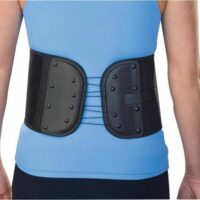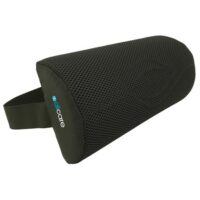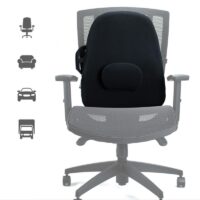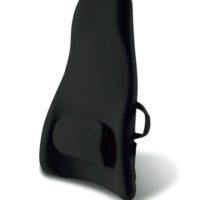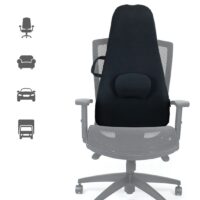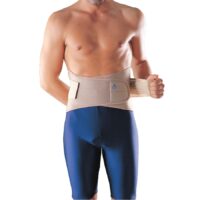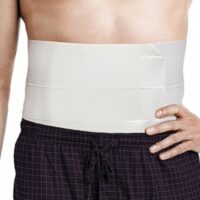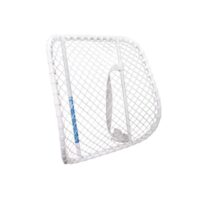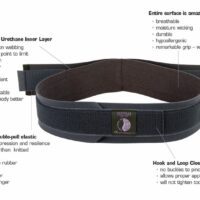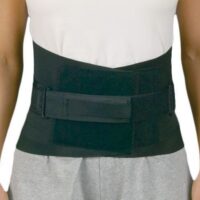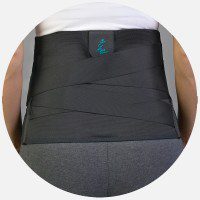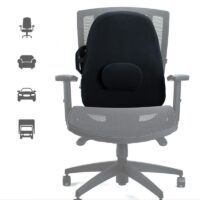Spondylolysis
Article by John Miller

Spondylolysis
Understanding Stress Fractures in the Back
Spondylolysis Explained
Spondylolysis describes a stress fracture affecting the pars interarticularis of the spine. This fracture commonly leads to structural back pain among children, adolescents, and active adults, particularly at the L5 vertebral level, with a prevalence of 90-95%.
This condition presents in various forms: dysplasic, isthmic (from sports), degenerative, or traumatic, with the isthmic type being predominant. Spondylolysis can cause spondylolisthesis, which is a slippage of the vertebral body seen in roughly half of the cases, especially when spondylolysis is bilateral, or there’s mechanical instability, often observed in females. Notably, some nonunion fractures form a fibrous mesh rather than bone, although complete healing of the stress lesion is typical.
Symptoms of Spondylolysis
Patients typically report unilateral back pain which intensifies with activities like arching or standing that stress the pars interarticularis. While the initial pain may be sharp, it dulls over time and often eases with rest. Approximately 80% of sufferers exhibit a pronounced back arch and tight hamstrings.
Causes and Age of Onset
Activities that excessively bend or twist the spine, such as certain sports, can cause spondylolysis. It can emerge in early childhood or adolescence, with a higher incidence in males.
Diagnosing Spondylolysis
Diagnostic scans, including oblique X-rays, bone scintigraphy, CT, MRI, and SPECT bone scans, are vital for detecting spondylolysis. These scans are complemented by physical exams that typically reveal back pain and hamstring tightness without neurological symptoms.
High-Risk Sports for Back Stress Fractures

Identifying Risky Activities
Certain sports exert significant stress on the spine, increasing the risk of spondylolysis. Activities that involve repetitive twisting, hyperextension, or impact can predispose athletes to stress fractures in the back.
Sports with Elevated Risks
Cricket: Bowlers in cricket often engage in repetitive, fast-twisting motions during delivery, placing them at a higher risk.
Gymnastics: The sport requires extreme spinal flexion and extension, making gymnasts particularly susceptible.
Weightlifting: Lifters experience high spinal loads during squats and deadlifts, which can lead to stress fractures.
Wrestling and Judo: These combat sports involve forceful twisting and hyperextension movements.
Swimming: Butterfly strokes specifically can stress the lower back through repetitive arching motions.
Ballet and Dance: Dancers often perform hyperextensions as part of their routines.
Ice Skating: Skaters are at risk due to jumps and landings that jar the spine and the need for strong back arches in some movements.
Track and Field: Events like javelin throwing involve sudden hyperextensions and rotations of the spine.
Golf: Golfers risk stress fractures due to the rotational force exerted on the spine during swings.
Diving: Divers repeatedly arch their backs with significant force when entering the water.
American Football: The impact and physical nature of football, along with the arching stances, contribute to spinal stress.
Minimising Risks in High-Impact Sports
Athletes participating in these sports should take preventive measures, such as engaging in core-strengthening exercises, maintaining flexibility, and ensuring proper technique. Coaches and healthcare providers should monitor athletes for signs of overuse and encourage appropriate rest and recovery periods.
Understanding these risks empowers athletes to seek early intervention if symptoms arise, facilitating a quicker return to their passion with a stronger, healthier back.
Treating Spondylolysis
The first line of treatment for spondylolysis centres on alleviating pain and promoting healing. Resting from activities that aggravate the condition is essential. The strategic use of a back brace serves to manage discomfort and safeguard the injury site during recovery. The importance of conservative treatment is paramount, as bilateral fractures of the pars interarticularis can lead to persistent instability and lifelong spinal alterations. The expert guidance of a spinal physiotherapist, who understands the demands of your sport, is crucial to avert the progression to more invasive interventions, such as spinal surgery, or the cessation of sporting activities altogether.
Rehabilitation and Prevention
Rehabilitation aims to restore joint mobility, increase muscle flexibility, and build strength. Physiotherapist-guided exercises are often the cornerstone of this process, with Pilates playing a key role in the latter stages of rehabilitation and prevention. The goal is to reinforce the back and core muscles to dynamically support and protect the lower back from further stress.
When to Consider Surgery
Surgery should be considered a last resort, recommended only after all conservative treatments have been exhausted without providing relief from severe, ongoing symptoms. Carefully evaluating the potential risks and benefits with healthcare professionals is essential before opting for spinal surgery.
Prognosis
The recovery period for most individuals with spondylolysis extends up to 3 or 4 months, although athletes engaged in high-risk sports may require a longer rehabilitation period. While non-surgical treatments are often successful, the risk of re-injury remains if the factors contributing to the initial injury are not fully addressed.
Conclusion
In sum, spondylolysis is a prevalent spinal condition, especially among young, athletic populations. Early recognition and management are key to overcoming this condition. Conservative treatment strategies, focusing on pain relief and muscle strengthening, are effective for most, facilitating a return to everyday activities and sports. Nevertheless, preventive measures must continue beyond the disappearance of symptoms to prevent recurrence and maintain spinal integrity. For persistent cases that challenge conservative management, surgery may be necessary, but this requires judicious deliberation.
Ultimately, a customised treatment plan, devised by experienced medical professionals, ensures the best possible outcome, allowing individuals to enjoy an active lifestyle without the hindrance of back pain.
Related Articles
- Back Pain Physiotherapy: Your Guide to What to Expect: Offers insights into physiotherapy approaches for back pain, including conditions like Spondylolysis.
- Spondylolisthesis: Explores Spondylolisthesis, a condition often linked with Spondylolysis, involving vertebra displacement.
- Core Stability: A Physiotherapist’s Guide for Spinal Health: Discusses core stability’s importance for spinal health, crucial in managing Spondylolysis.
- Cricket Back Stress Fractures: Focuses on cricket, a sport with high incidence of back stress fractures, relevant to Spondylolysis.
- Swimmers Back: Essential Guide to Lower Back Pain: Provides prevention and management tips for back issues in swimmers, including Spondylolysis.
- Stress Fracture Management and Prevention – Physio Guide: Emphasises physiotherapy in recovery and prevention of stress fractures, including those in the back seen in Spondylolysis.
Rochedale - Call 38410277
Book Online: RochedaleSalisbury - Call 32751044
Book Online: SalisburySandgate - Call 32691122
Book Online: SandgateWhat Causes Lower Back Pain?
Introduction
Lower back pain is a widespread issue in Australia, stemming from diverse conditions. As physiotherapists, we often encounter various causes of this pain. This guide aims to shed light on these causes and provide valuable insights for effective management.
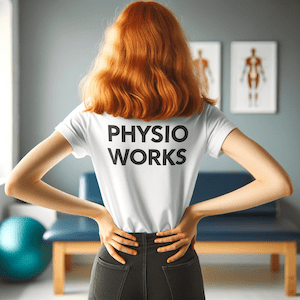

Muscle-Related Injuries
Muscle injuries are a predominant cause of lower back pain, including:
- Back Cramps and Muscle Pain: Typically resulting from overuse or strain.
- Core Stability Deficiency: Weak core muscles can lead to increased back strain.
- DOMS (Delayed Onset Muscle Soreness): Soreness affecting back muscles post-exercise.
Recent research underscores the importance of regular exercise and core strengthening in preventing these injuries.
Bone-Related Injuries
Bone health is crucial in lower back pain, encompassing conditions like:
- Spondylosis: Degenerative spine conditions.
- Spondylolysis or Stress Fracture: Common in athletes, such as cricket bowlers.
- Spondylolisthesis: Occurs when a vertebra slips over another.
- Osteoporosis: Causes bones to weaken, increasing fracture risk. Advancements in bone density scanning have improved early detection and management.
- Scheuermann’s Disease: Affects spinal bone growth in teenagers.
- Scoliosis: An abnormal curvature of the spine causing pain.
- Spinal Stenosis: A narrowing of the spinal canal leading to nerve compression.
Disc-Related Injuries
Spinal discs are vital for spinal health:
- Bulging and Disc Protrusions: These discs protrude or "slip" and can press on nerves.
- Herniated Disc: A more severe form of disc protrusion.
- Degenerative Disc Disease: Age-related disc wear and tear.
Minimally invasive surgical techniques have transformed the treatment of severe disc-related injuries where physiotherapy and other non-operative options fail to improve.
Back Joint Injuries
- Facet Joint Pain: Arises from arthritis or stress on these spinal joints.
Nerve-Related Injuries
Nerve issues can lead to:
- Nerve Pain and Pinched Nerves: Caused by spinal nerve compression from disc bulging or arthritic changes.
- Sciatica: Irritation of the sciatic nerve.
Physiotherapy and newer medications have been effective in managing these conditions. Some will require injection therapies or surgery.
Pelvis-Related Injuries
Pelvic issues also contribute to lower back pain:
- Sacroiliac Joint Pain: Involving joints connecting the spine to the pelvis.
- Piriformis Syndrome: Where the piriformis muscle irritates the sciatic nerve.
Pregnancy-Related Pain
- Pregnancy Back Pain: Often due to increased back strain during pregnancy. Prenatal physiotherapy programs are beneficial.
Systemic Diseases
Systemic diseases like Ankylosing Spondylitis, Fibromyalgia and Rheumatoid Arthritis can cause back pain.
Recent Research and Advancements
Current research emphasises a holistic approach to treating lower back pain. Techniques like yoga and Pilates, alongside traditional physiotherapy, and conservatively progressed gym programs show significant relief. The role of diet in managing weight and inflammation is increasingly recognised.
Best Treatments for Lower Back Pain
Treatment varies but often includes:
- Physiotherapy
- Pain management
- Strength and flexibility exercise programs
- Ergonomic adjustments
- Surgical interventions for severe cases
Conclusion
Lower back pain is a significant health concern in Australia. Understanding its causes and seeking professional physiotherapy advice can greatly improve life quality. Remember, early intervention is key for an effective recovery.
What to Do?
If you're experiencing lower back pain, it's vital to consult a physiotherapist or doctor. They can provide an assessment and customised treatment plan based on your specific condition.
Rochedale - Call 38410277
Book Online: RochedaleSalisbury - Call 32751044
Book Online: SalisburySandgate - Call 32691122
Book Online: SandgateBack Pain FAQs: What to Do? When?
Back pain is one of the most common health concerns, affecting countless Australians every year. Whether it's a dull ache or a sharp pain, back pain can significantly impact your quality of life. In this FAQ, we'll explore why back pain occurs, how it can be treated, and what steps you can take to prevent it. Each section below includes helpful links to more detailed articles on our website, making it easy to find the information you need.
Why Does Back Pain Occur?
Back pain can result from various causes, including muscle strains, herniated discs, or underlying health conditions. Understanding the root cause of your pain is crucial in determining the most effective treatment.
- Most Common Causes of Severe Back Pain
Discover the primary reasons behind back pain and how they affect your daily life. Learn more about severe back pain causes. - Causes of Lower Back Pain
Learn about the specific factors contributing to lower back pain and how to address them. Explore the causes of lower back pain. - Causes of Upper Back Pain
Upper back pain can be particularly challenging. Find out what's causing your discomfort and how to alleviate it. Find out more about upper back pain.
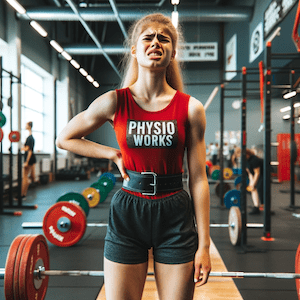

How Can Back Pain Be Treated?
A variety of treatments can help alleviate back pain, from physiotherapy to targeted exercises. Knowing your options is the first step toward effective relief.
- Best Treatment for Lower Back Pain
Discover the most effective treatments for alleviating lower back pain. Check out the best back treatments. - Physiotherapy for Back Pain
Physiotherapy offers a comprehensive approach to managing and reducing back pain. Learn about physiotherapy options. - Exercises for Back Strength
Strengthening your back through exercise is key to both treatment and prevention. Discover back-strengthening exercises.
What Are the Prevention Tips for Back Pain?
Preventing back pain before it starts is often the best strategy. Incorporating healthy habits into your daily routine can make a world of difference.
- Preventing Back Pain Tips
Simple lifestyle changes can significantly reduce your risk of back pain. Read back pain prevention tips. - Proper Back Posture Guidelines
Maintaining good posture is essential in preventing back pain. Understand proper posture. - Regular Exercise Routines for Back Pain
Consistent exercise can keep your back healthy and pain-free. Find back exercise routines.
When Should You See a Physio or Doctor for Back Pain?
It's important to know when back pain requires professional help. Recognising the signs can lead to more effective treatment and a quicker recovery.
- Severe Back Pain? Causes, Symptoms & Treatment
Identify severe back pain symptoms and the appropriate treatments. Learn about severe back pain. - Warning Signs of Severe Back Conditions
Some back pain signals a more serious condition. Learn when to seek medical attention. Recognise warning signs. - Physiotherapy Consultation for Back Pain: What to Expect?
Understand what happens during a physiotherapy consultation for back pain. What to expect at your physio consultation.
What Can Be Done for Repeated Bouts & Incidental Back Pain?
Recurring back pain can be particularly frustrating. By understanding the underlying causes, you can take steps to manage and prevent future episodes.
- Causes of Recurrent Back Strains
Learn why back strains keep coming back and how to stop them. Explore recurrent back strain causes. - What Causes Repeat Low Back Strains & Sprains?
Repeated low back issues can stem from various factors. Understanding these can help in managing the pain. Find out more about low back strains.
Conclusion
Arming yourself with knowledge about back pain can empower you to make informed decisions about your health. Whether you’re experiencing pain now or want to prevent it in the future, taking proactive steps can make all the difference.


Rochedale - Call 38410277
Book Online: RochedaleSalisbury - Call 32751044
Book Online: SalisburySandgate - Call 32691122
Book Online: SandgateCommon Back Pain FAQs
- Why does back pain occur?
Back pain can occur due to muscle strains, herniated discs, or underlying medical conditions. Identifying the cause is essential for effective treatment. - How can I treat back pain at home?
Mild back pain can often be managed with rest, gentle exercise, and over-the-counter pain relievers. Physiotherapy is recommended for ongoing issues. - What are the best exercises for back pain?
Strengthening exercises like planks, bridges, and gentle stretching can help prevent and reduce back pain. Consult a physiotherapist for personalised advice. - When should I see a doctor for back pain?
Seek medical attention if your back pain is severe, persistent, or accompanied by symptoms like numbness, tingling, or weakness in the legs. - What are the most common causes of lower back pain?
Lower back pain is often caused by poor posture, lifting heavy objects, or sitting for long periods. Muscle imbalances and herniated discs can also be factors. - Can physiotherapy help with back pain?
Yes, physiotherapy can significantly reduce back pain by improving mobility, strengthening muscles, and addressing the root causes of pain.
Related Articles:
- Causes of Lower Back Pain: Discover the common causes and symptoms of lower back pain.
- Best Treatment for Lower Back Pain: Explore the most effective treatment options for lower back pain.
- Physiotherapy for Back Pain: Learn how physiotherapy can provide relief for back pain sufferers.
- Exercises for Back Strength: Strengthen your back with these targeted exercises.
- Preventing Back Pain Tips: Tips on how to prevent back pain before it starts.
- Understanding Herniated Discs: Learn about herniated discs and how they cause back pain.
- Benefits of Back Massage: Explore the therapeutic benefits of back massage.
- Severe Back Pain? Causes, Symptoms & Treatment: Identify and treat severe back pain effectively.
- Proper Back Posture Guidelines: Improve your posture to reduce back pain.
- Walking and Back Pain: Understand the impact of walking on your back health.
- Back Pain - This Mayo article discusses the symptoms, causes, and treatments for back pain.
- Understanding Back Pain - WebMD offers a comprehensive guide to understanding back pain, including treatment options and prevention strategies.
- Back Pain Overview - Healthline provides an overview of back pain, its causes, treatments, and prevention tips.



